American Beautyberry: A Showstopper Native Plant
The American Beautyberry (Callicarpa americana) is like no other plant I’ve seen. In place of bright blooms, it sports bright purple berries in beautiful clusters that line its stems starting late summer.
Just when flowering plants are looking frazzled at the end of summer, Beautyberry is getting ready to shine!
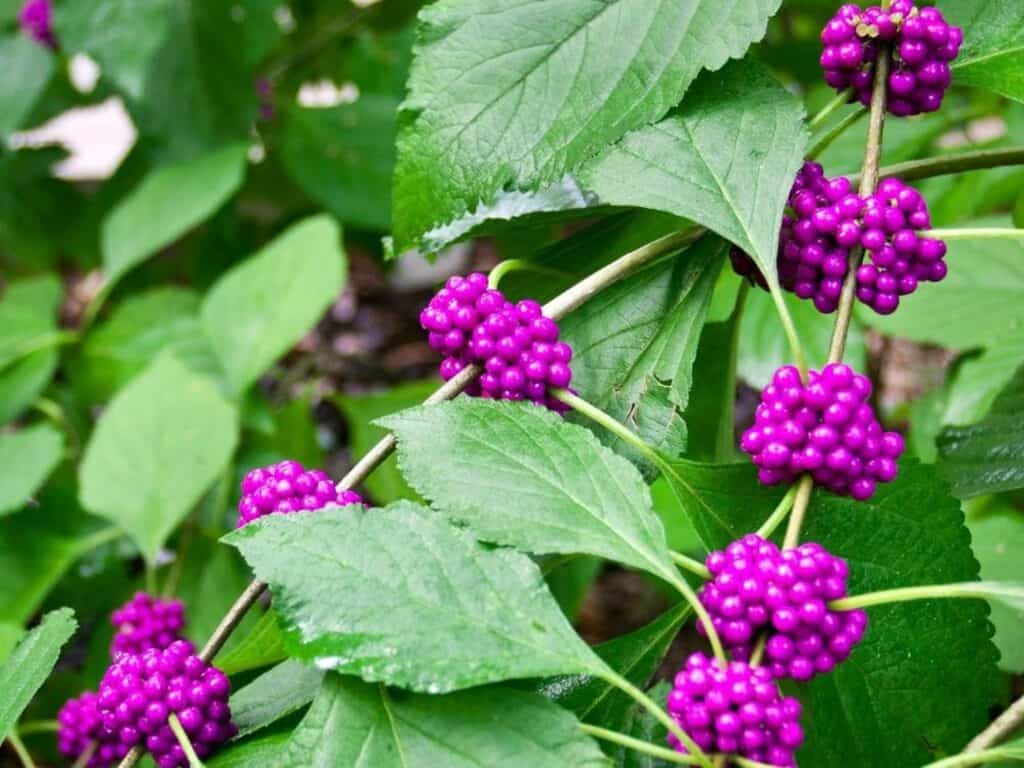
Not only is this native shrub fun to look at, it is a great way to invite song birds into your yard. They love eating the berries of this deciduous shrub.
Looking for more shade-loving plants like Beautyberry? Start by downloading my free printable PDF of the Top 10 Texas Shade Plants. You can take this handy one-pager with you to the plant nursery.
7 Reasons to Add an American Beautyberry to Your Yard
1. It is a great plant for wildlife gardening
When it comes to adding plants in my yard, I’m always looking for those that benefit more than just me. I love that the berries provide an important food source for different species of birds and small mammals.
Here in Texas, the Mockingbird is especially fond of the purple berries. According to Audubon, the American Beautyberry is a surefire way to attract migrating warblers too!
2. The berries provide a beautiful contrast in the garden
When planning out a garden, most of us think about getting color from flowering plants. But I love that the color in this plant comes from berries and not blooms. Beautyberry shrubs have tiny white flowers in early summer, but the real show is its prominent clusters of deep magenta berries.
The beautiful fruit really “pop” against its bright green leaves through late fall!
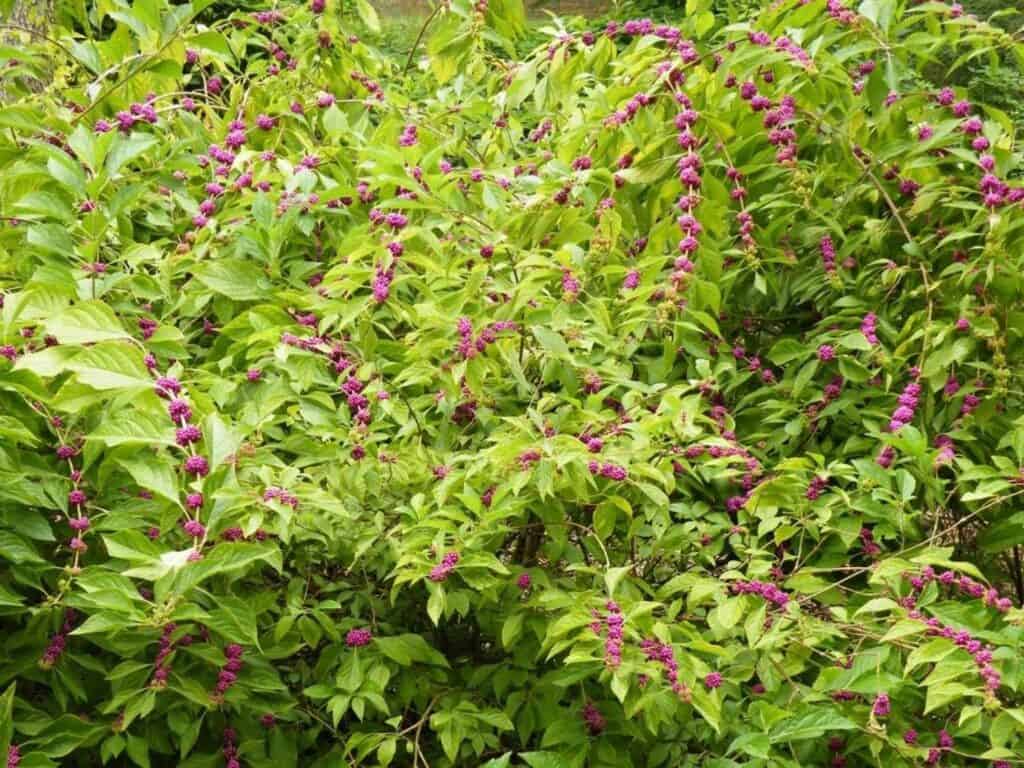
I first saw Beautyberry in one of my neighbor’s beds along the sidewalk. The berries that appeared in the fall stopped me in my tracks. I had never seen anything like it!
3. It does well in yard with shade trees
Beauty berry is naturally an understory plant. You’ll find it growing in wooded areas in nature. My dad has them growing in the forested/swampy areas around his home in rural Florida.
Beautyberry loves dappled sunlight or partial shade. This is a great plant to put in a yard with shade trees where full sun plants can’t thrive.
4. The large plant is a great focal point in a bed
Beautyberry can get big. Typically 4-5 feet, but up to 9 feet in some cases. You want to give it room to grow and spread out those gorgeous draping branches.
Make it a focal plant in your garden or place it at the back of a border with plenty of room to grow. You can also grow it in mass plantings in a shady area.
5. American Beautyberry isn’t picky about its soil
Beautyberry prefers moist, well-drained soil. As long as you don’t let the soil completely dry out it should be content in a variety of soils.
6. It is relatively easy to find at the nursery
American Beautyberry is native to a wide swath of the Southern United States. While many native plants can be difficult to find at the nursery, this is one that they tend to carry. Yay!
7. It is also easy to propagate to share some with friends
I got my beauty berry plant thanks to the generosity of a fellow Native Plant Society Member. This is one plant that is just too special not to share with others.
It can be propagated from seed, root cuttings or softwood cuttings.
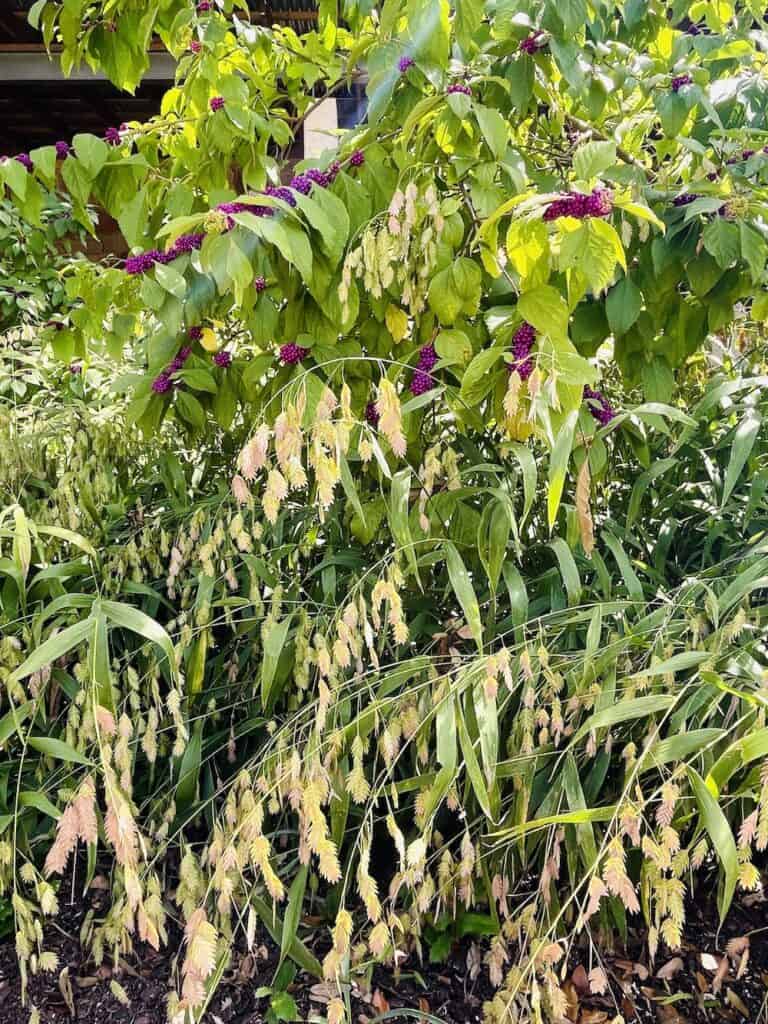
Download the Free PDF: Texas Native Shade Plants
Have a shady yard? I created a handy one-page PDF for you to print and take along with you to the plant nursery. It includes a thumbnail photo of each shade-loving plant along with both its common and scientific name, and other helpful growing info. Get it here:
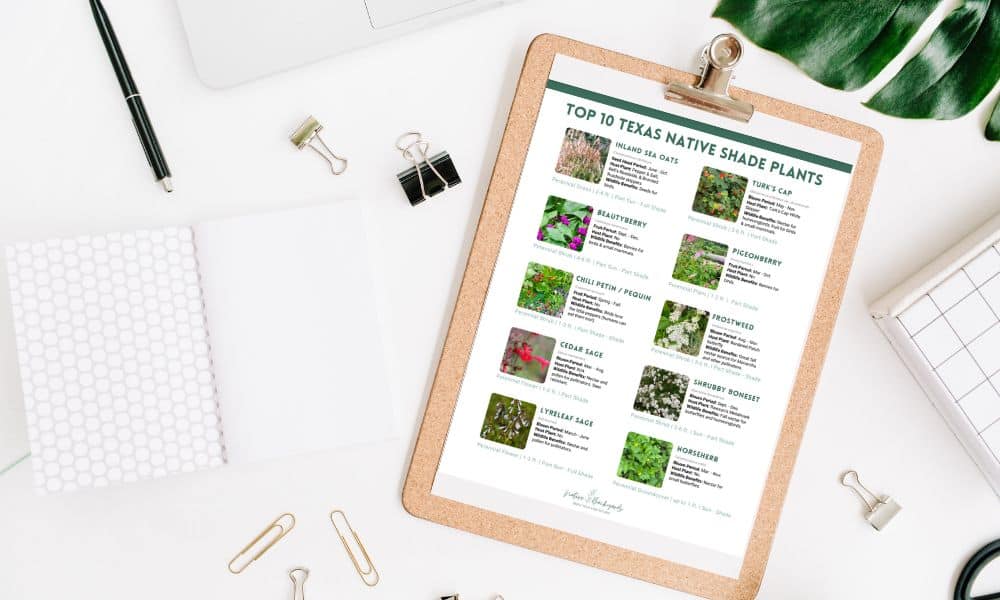
How to Find American Beautyberry at the Nursery
Thankfully, American Beautyberry is one of the US native plants that is relatively easy to find at nurseries, especially those that carry a variety of natives. Just be sure you’re getting the native variety!
Look for Scientific Name: Callicarpa americana
While American Beautyberry is the shrub’s common name, its scientific name is Callicarpa americana, which literally means “beautiful fruit” in Greek!
It is helpful to write down this scientific name before heading to the nursery to make sure you get the right plant.
Avoid Non-Native Beautyberry Plants
There are other non-native versions of Beautyberry plants that nurseries might carry. These Beautyberries look very similar but are native to Asia, not the US:
- Callicarpa dichotoma – native to China, Japan, and Korea
- Callicarpa japonica – native to Japan
In general, choosing a plant native to your area is more beneficial to insects and wildlife. They have evolved alongside these native plants and are able to eat them unlike many nonnatives.
Non-natives can also become invasive and escape cultivation more readily. Learn more about native vs. non-native plants here!
Avoid Beautyberry Cultivars
When possible, you also want to try to avoid buying cultivars of American Beautyberry. These are plants that have been modified from their original native form, such as having white berries.
Cultivars will have an additional name such as “Pearl Glam” like this example sold through a big box store.
Cultivars aren’t necessarily bad, they just haven’t been studied enough in terms of their impact on the insects and wildlife that use them as food.
How to Grow American Beautyberry
Watering a Beautyberry Bush
Keep your Beautyberry plant watered well until established. You want the soil to be moist, but well-drained. Once established you can water every week or two during the summer, more if it is in full sun than part shade.
Pruning a Beautyberry Bush
In general, American Beautyberry is a low maintenance plant. You want to let a beautybush spread and sprawl without much pruning.
However, you can prune it back to about a foot above the ground at the end of winter. This will help it grow more compactly, especially for a mature plant. The plant will drop its leaves most winters, but new growth will emerge from the base of the plant in early spring.
Propagating Beautyberry Plants
You can propagate beauty berry easily by cutting soft wood cuttings from new growth in the spring. Add a bit of rooting hormone to the end of the cutting before potting. You can also grow the plant from seed. I like to get American Beautyberry seeds from Native American Seed.
Make sure to get my list of gardening tools used by the pros to help you when planting your beautyberry!
Pin this to spread the word about Beautyberry!
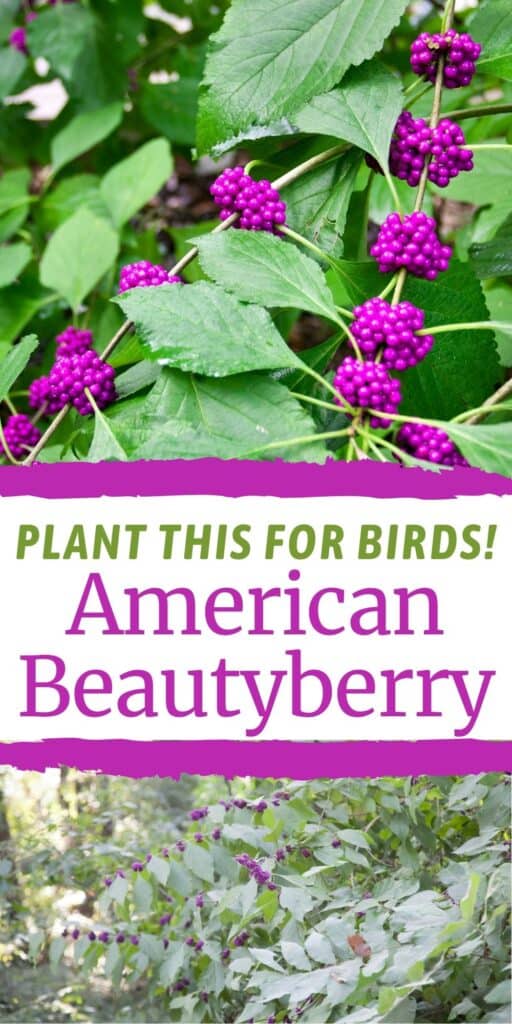
Common American Beautyberry Questions
Beautyberry is not poisonous or toxic to pets. Many birds and small mammals will eat the fruit and deer will eat the foilage.
While the fruit is not typically consumed these days. However according to Wildflower.org, Native Americans used the roots and leaves to make a tea for medicinal purposes. ForagingTexas.com has a recipe for making jelly from the berry clusters.
American Beautyberry is native to the Southeastern United States and has a wide native growing region from Maryland to south Florida and west to Texas. It is hardy in growing zones 7-11.
The American Beautyberry will drop its leaves in the winter except in the warmest of its growing regions. The berries will stay on the plant to provide color unless they are eaten first by birds!
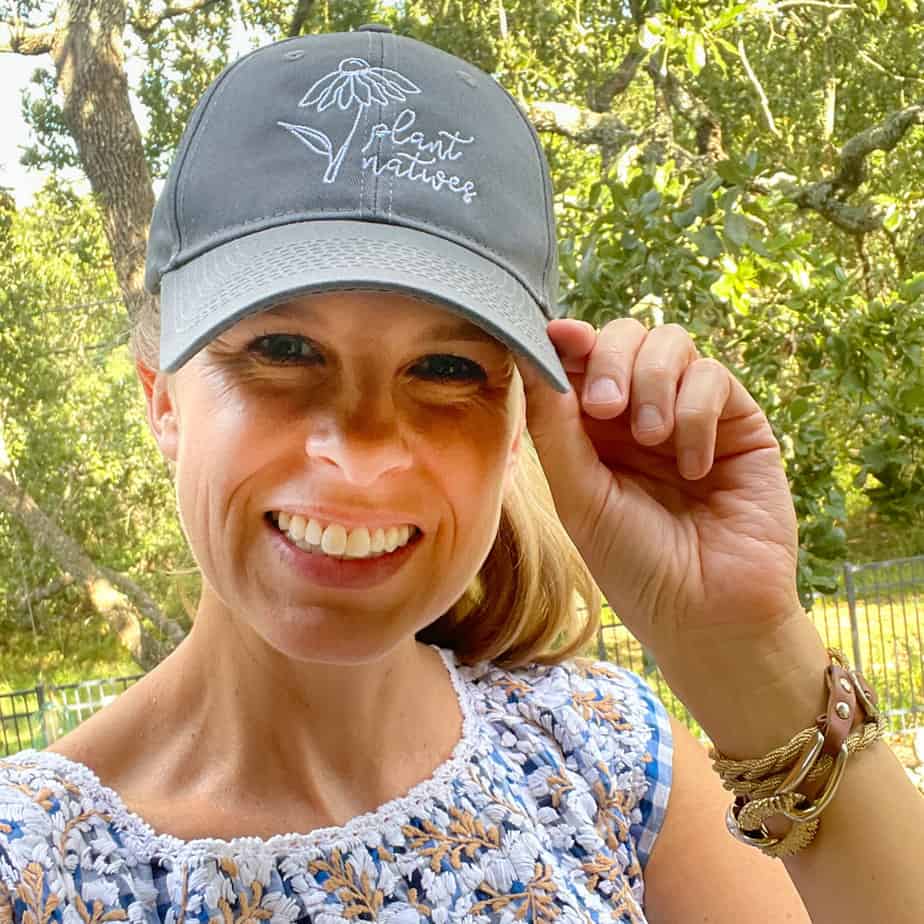
Welcome to Native Backyards! I’m Haeley from San Antonio, Texas, and I want to help you grow more native plants.
I have seen firsthand how the right plants can bring your yard to life with butterflies, bees, and birds. I’ve transformed my yard with Texas natives and I’m excited to share what I’ve learned with you.
Join my newsletter here! – each week I’ll send you helpful tips to make your native plant garden a reality!
Want to learn more about me and my garden? Check out my About page!

Wonderful article. I am a big fan of American Beauty Berry. I would like to point out that you missed a VERY important aspect of this amazing plant. It’s leaves are a natural and EFFECTIVE mosquito repellent. Simply crush them up in your hand and rub on exposed skin. There is no scent or stickiness. I use it all the time here in South Alabama.
Great point, Byron! A friend of mine had mentioned this to me as well. See soaks the leaves in witch hazel to make a spray. I’m going to try rubbing the leaves on me the next time I’m out in my yard. 😊
Hi,
Just would like to know if it is hard to tell the difference between the Beautyberry and other similar looking plants. Like the Elderberry, Huckleberry and even the Pokeberry? I sometimes can’t tell the difference between them especially the Elderberry and Pokeberry, as I have one of the worse brown thumbs in garden history. I am located in East Texas.
Hi Mark, thanks for your question! When the berries are on them, the Beautyberry is quite unique given the berries’ bright magenta color and their grouping around the stem. Its leaves are also different from Elderberry, which has narrow leaves. Look for reddish stems to distinguish Pokeweed. Here are links to their profiles on the NPSOT native plant database so you can see photos of each of them:
Pokeweed: https://npsot.org/posts/native-plant/phytolacca-americana/
Elderberry: https://npsot.org/posts/native-plant/sambucus-nigra-ssp-canadensis/
American Beautyberry: https://npsot.org/posts/native-plant/callicarpa-americana/